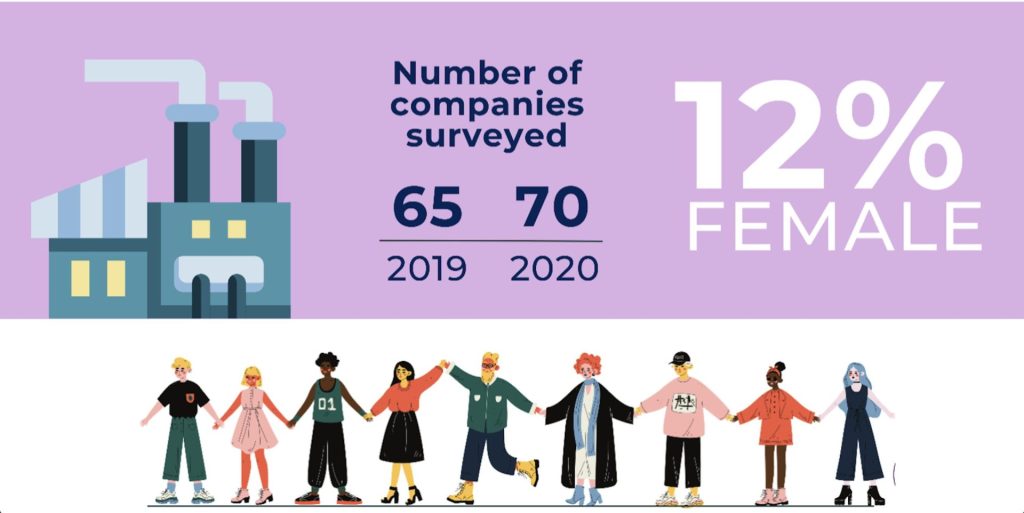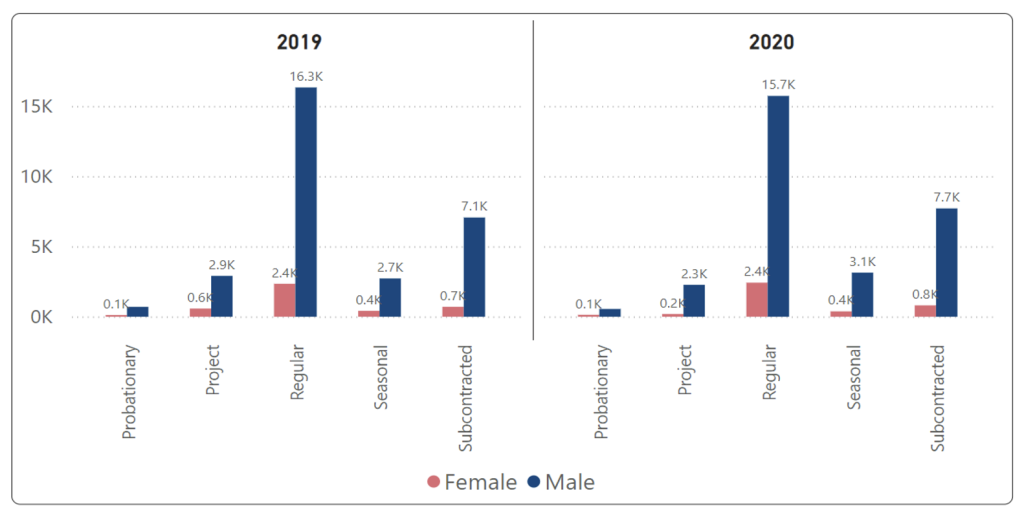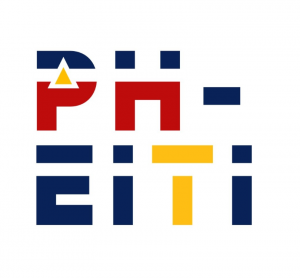Breaking rocks and gender barriers in extractive industries
Blog
Behind the photo:
Marcela Abalos works as a rehandling truck operator for more than a year inside the Didipio Mine in Barangay Didipio, Kasibu, Nueva Vizcaya. Source: DENR-MGB Regional Office Il
While the extractive sector is often seen as male-dominated, with mining jobs thought to require only physical strength, the reality is that women have long been an essential part of the industry. However, despite this, gender inequality persists in the sector, as evidenced by the data from the Philippine Extractive Industries Transparency Initiative (PH-EITI). Marcela Abalos works as a rehandling truck operator for more than a year inside the Didipio Mine in Barangay Didipio, Kasibu, Nueva Vizcaya. Source: DENR-MGB Regional Office Il
The PH-EITI provides data on the employment of reporting extractive companies, revealing that in 2020, only 12% of the 33,419 employees reported were females distributed across operational and administrative roles. This underrepresentation of women remains a valid concern that needs to be addressed to ensure gender inclusivity in the sector.
In addition to gender disproportion, women in the extractive industries experience other employment gaps. The 2020 PH-EITI data revealed that while the majority of reporting companies provide equal pay and promotion opportunities to both male and female employees, there is still a problem with the provision of equal benefits. For instance, very few companies offer paternity leave, perpetuating the gender gap in the workplace. Additionally, only a few companies provide benefits that support the welfare of employees’ families, such as daycare services for children, educational scholarships, and hospitalization.
Despite these gaps, it is noteworthy that extractive companies are making efforts to be more gender-inclusive.

2020 PH-EITI data shows that only 12% of the 33,419 employees reported were females.
According to the PH-EITI data, 31% of participating companies have unions, and 16% of union members are female employees. Some companies have all-women organizations, which aim to promote gender equality in the workplace and lobby for favorable policies on women’s welfare. Extractive companies are also investing in training to enhance women’s skills, including defensive driving, belt conveying, financial management, computer literacy, and more.
However, much must be done to achieve gender inclusivity in the extractive industries. Companies must recognize the shortcomings and take proactive steps to address them. Reporting employment and gender data can have a significant impact on identifying and breaking down gender-based barriers that exist in the employment of women in the mining industry.

Distribution of workers by gender and employment status in 2019 and 2020.
Nonetheless, the PH-EITI’s reporting template can still be improved, and additional information may be required from reporting companies, such as employment status, level, and nature of work. By comparing this information with statistics of male workers, the PH-EITI through its Multi-Stakeholder Group can identify possible obstacles to women’s development and provide recommendations to address these issues. Making comprehensive gender data available to stakeholders is a first and among the key steps in making informed decisions on how to address the gender gap, and ultimately achieve gender equality in the mining industry.
###

A government-led, multi-stakeholder initiative implementing EITI, the global standard that promotes the open, accountable management, and good governance of oil, gas, and mineral resources. PH-EITI was created on 26 November 2013 through EO No. 147, s. of 2013. It is a government commitment first announced through EO No. 79, s. of 2012.